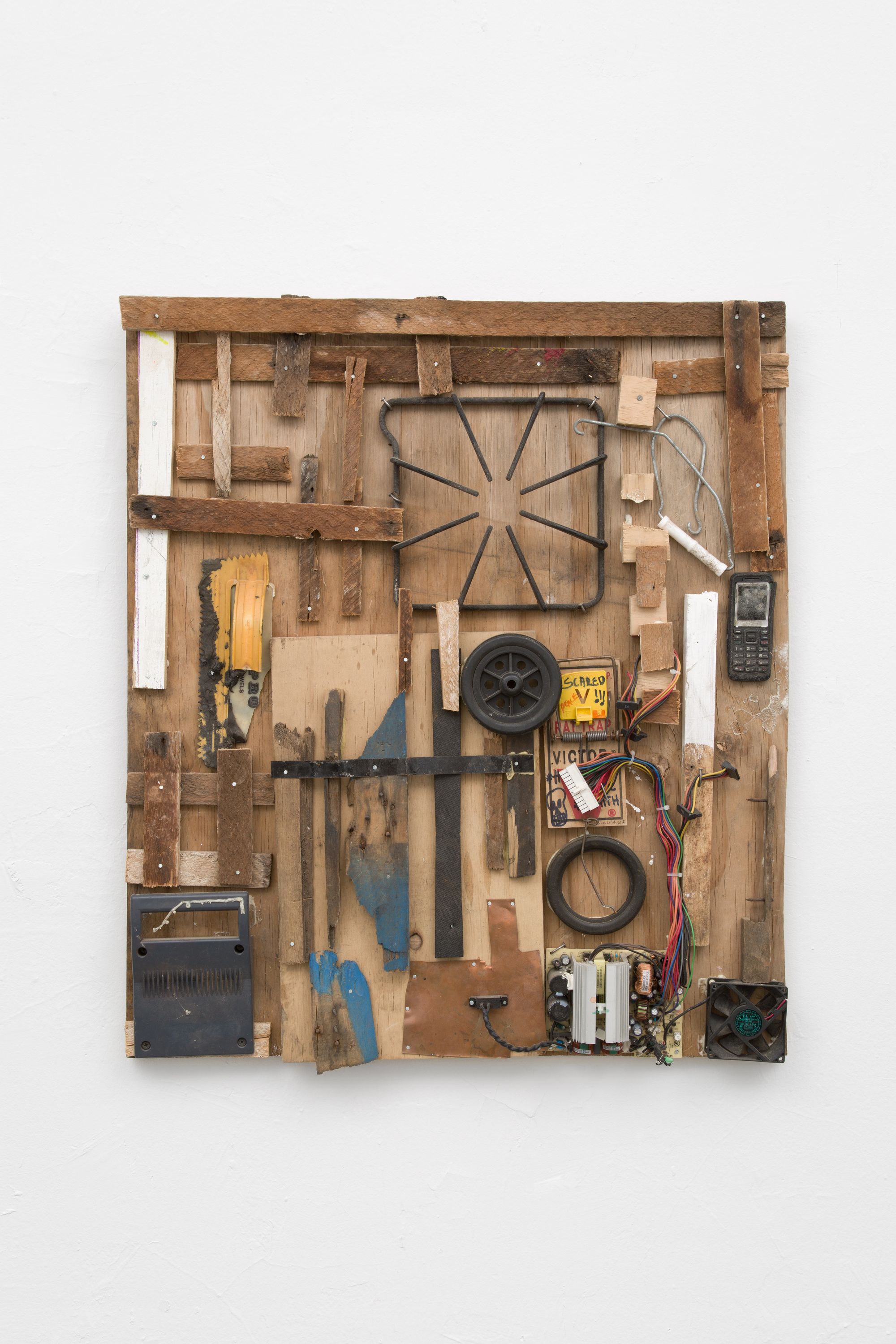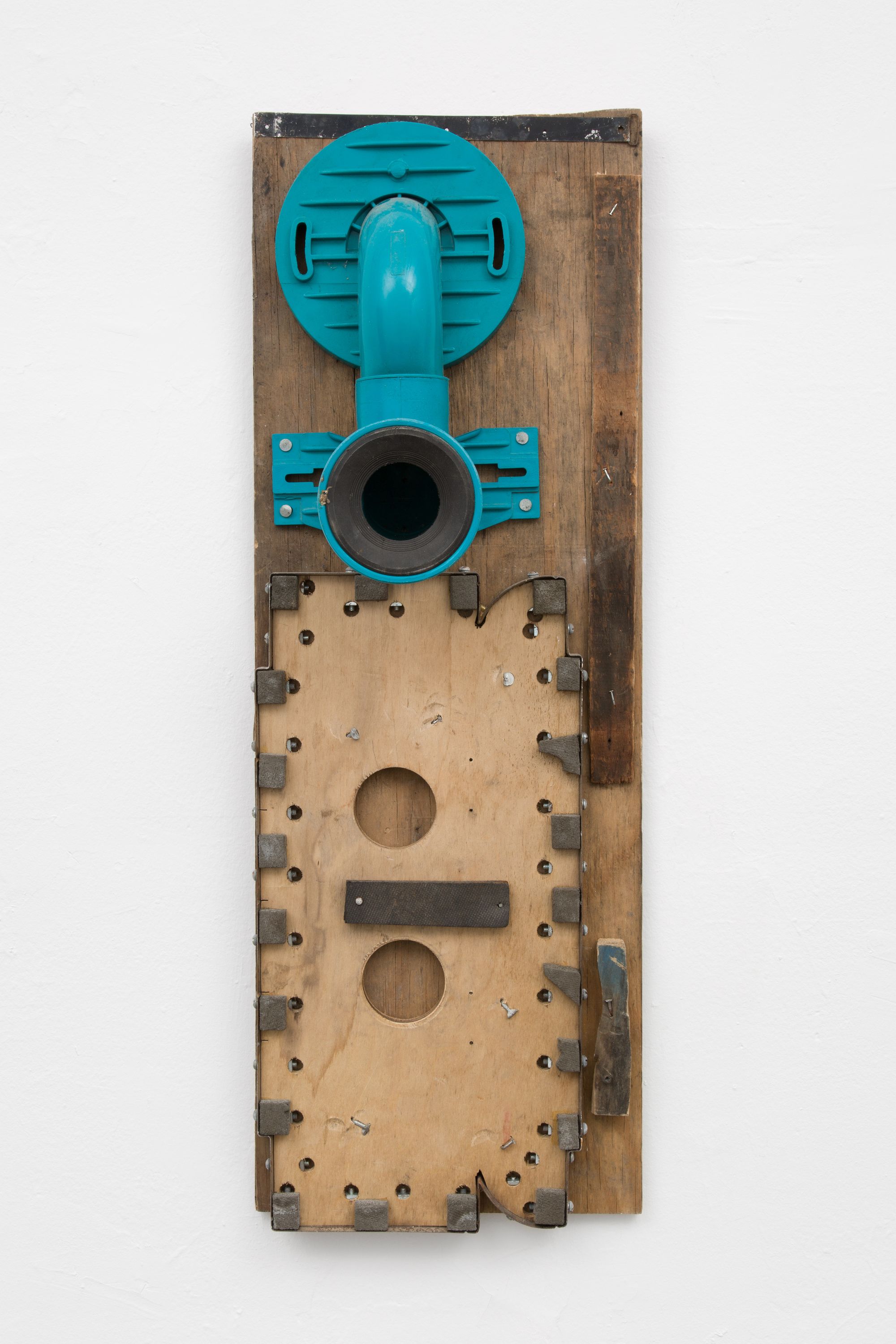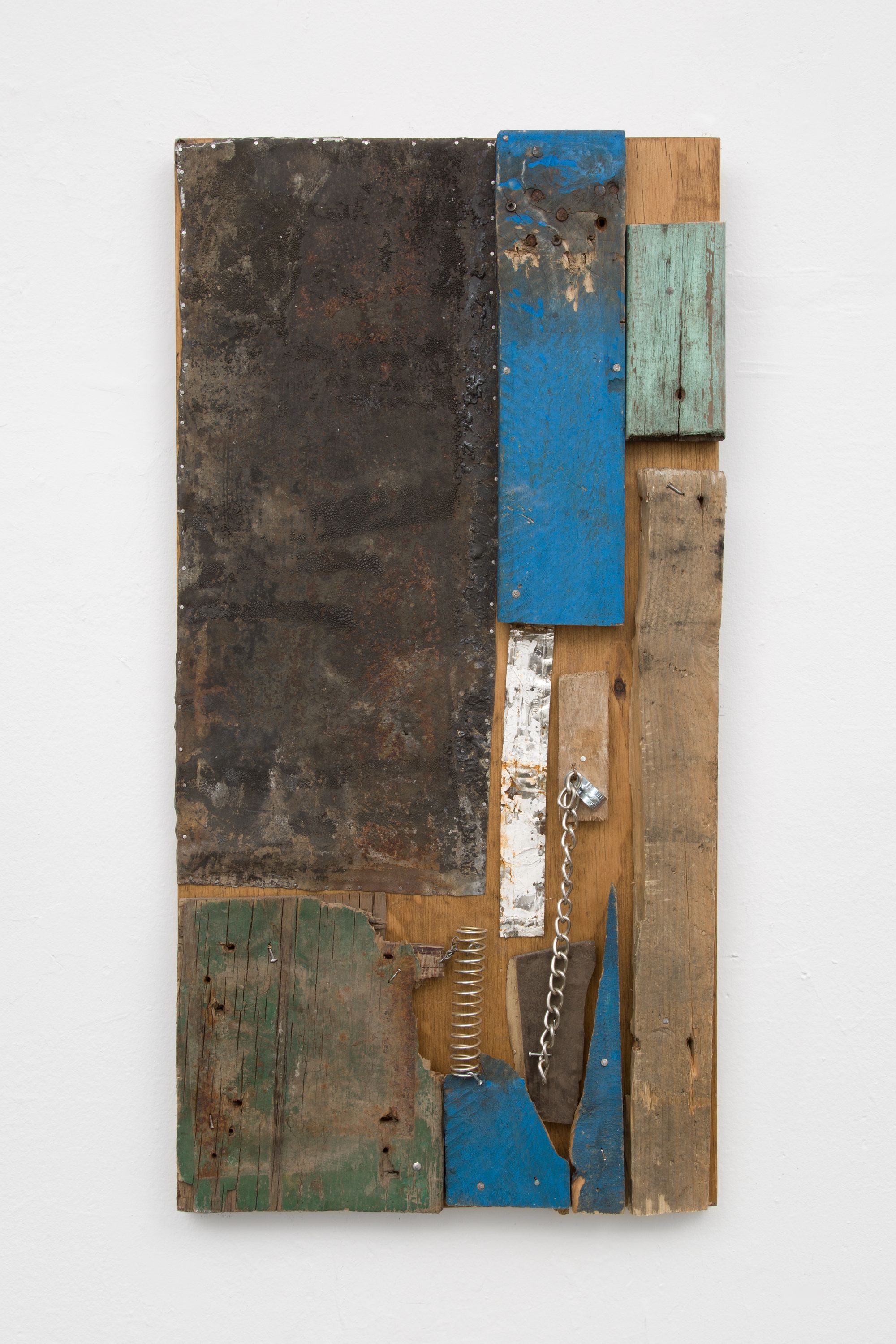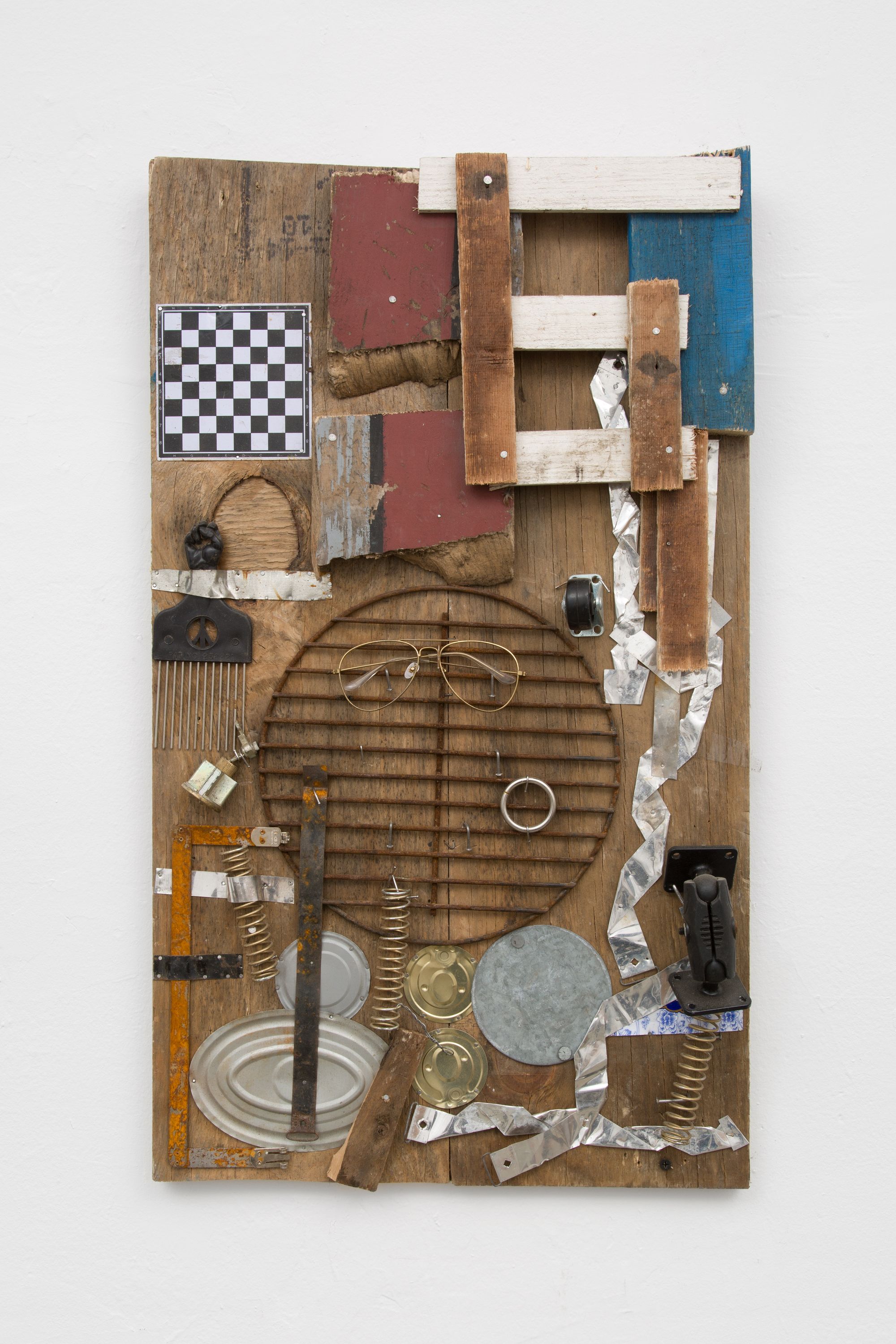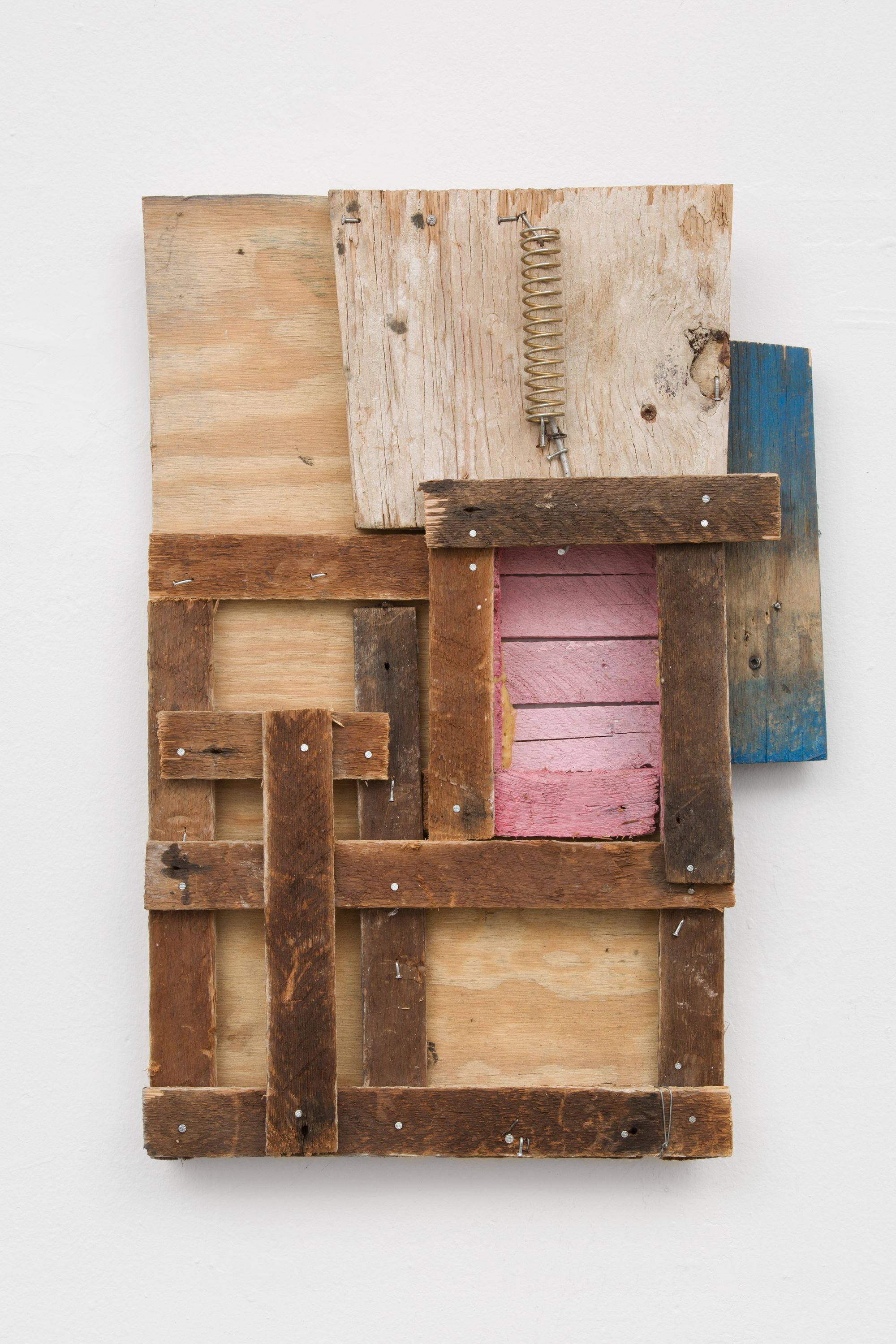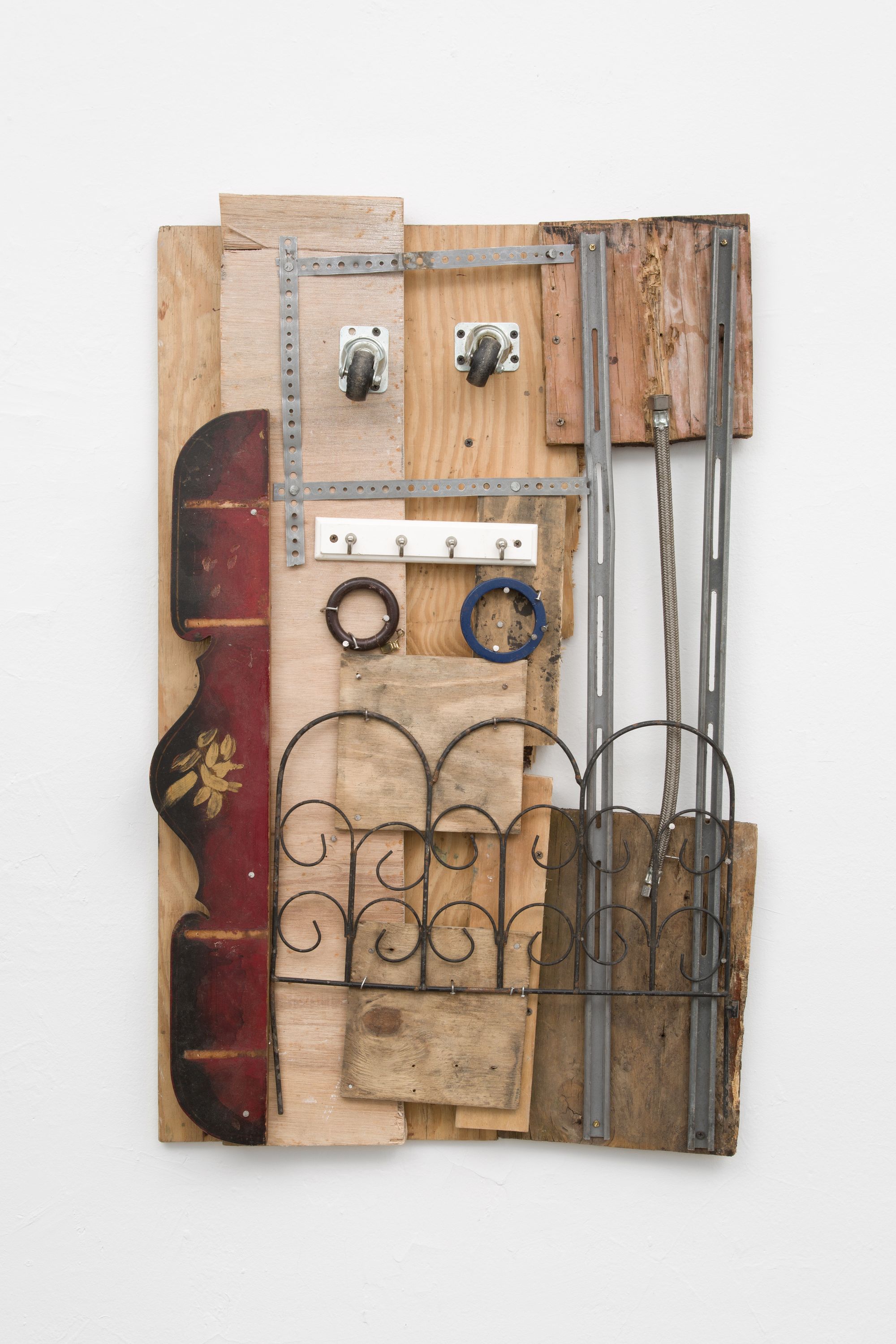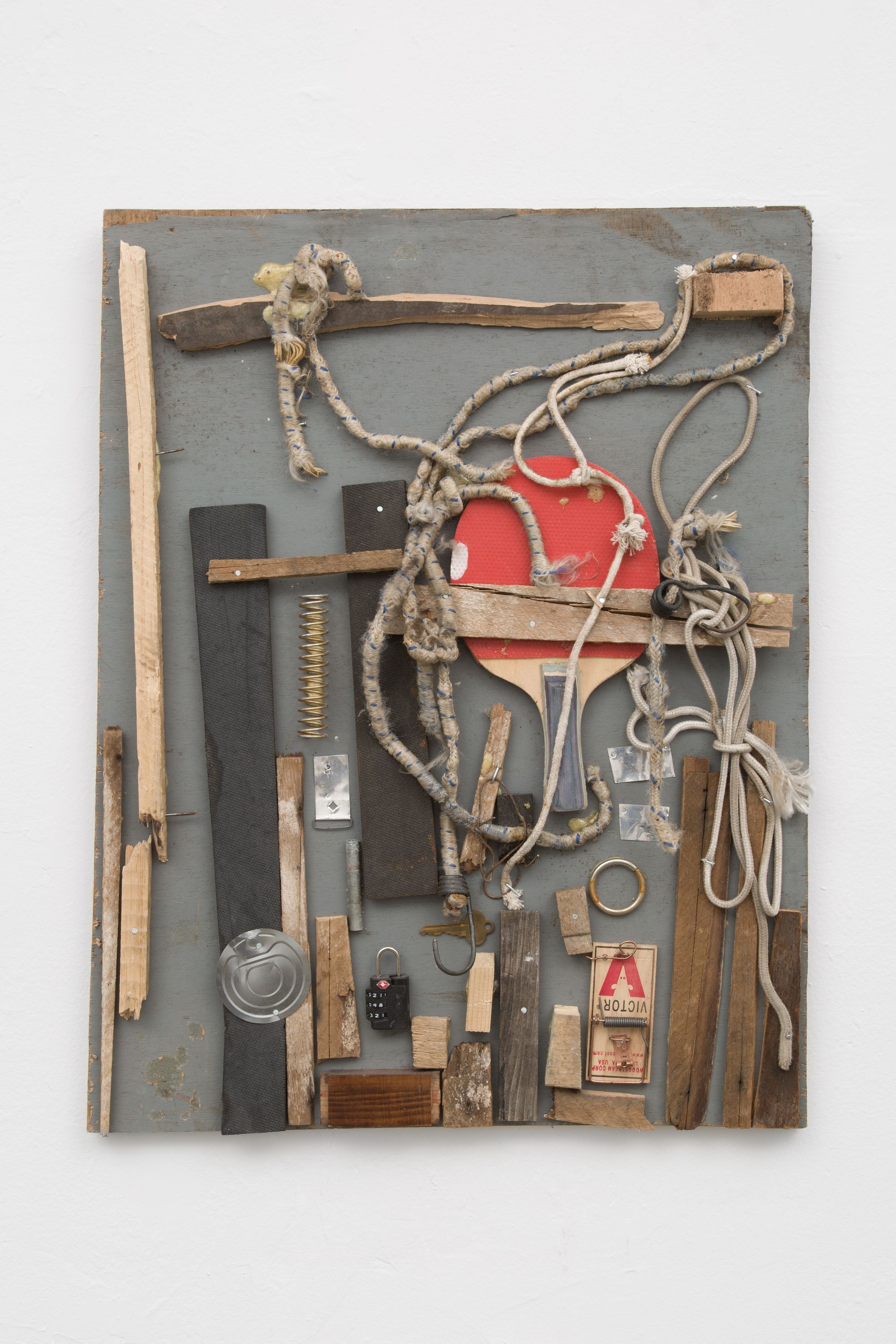
Past
Leilah Babirye
Amatwaale Ga Ssekabaka Mwanga II (The Empire of King Mwanga II)
Apr. 29–June 24, 2018
New York
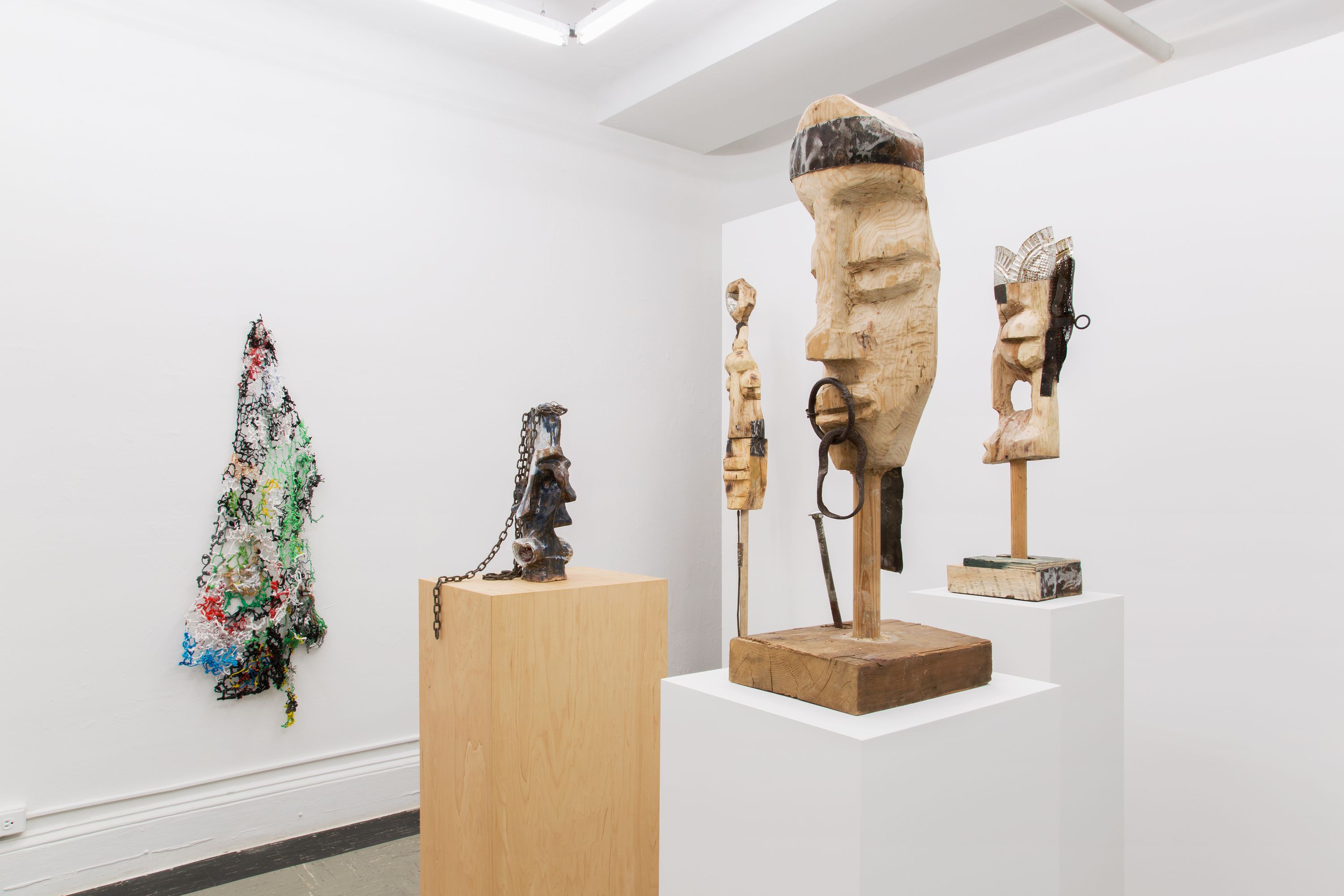
Gordon Robichaux is pleased to present Amatwaale Ga Ssekabaka Mwanga II (The Empire of King Mwanga II), Leilah Babirye’s first solo exhibition. Babirye’s multidisciplinary practice is steeped in activism: she transforms marginalized materials into objects that address identity and the human rights issues that motivated her to flee her native Uganda. Composed of debris collected from the streets of New York, Babirye’s works are woven, whittled, welded, burned, burnished, and assembled, often utilizing configurations of constraint, like locks and gates, while also promoting gestures of liberation.
A group of sculptures from Babirye’s ongoing series Queens is displayed on pedestals in the round. The works incorporate varied materials, including a double-sided ceramic head with hair fashioned out of a chain, and wooden forms carved using traditional African techniques, which the artist learned while studying sculpture in Kampala. Adorned with metal and nails, the Queens are named after contemporary princes and princesses within Buganda’s royal family; the sculptures conflate identities and challenge traditional ideas of gender and power. Presented on the walls of the gallery is a web of knotted plastic bags made during the artist’s subway commutes, and a series of puzzle-like panels composed of discarded fragments of wood embellished with detritus: cell phones, mousetraps, circuit boards, plumbing fittings, wires, a hair pick.
The exhibition’s title refers to King Mwanga II, who served as the Kabaka or king of Buganda (1884–88 and 1889–97), a subnational kingdom within modern-day Uganda. The king was openly bisexual, and the young men who served in his royal courts provided sexual favors for both him and his visitors. Colonization by Western missionaries, who condemned homosexuality, distorted the people’s perceptions and caused them to reject the cultural customs they once embraced. Such vilification persists in Uganda, where as recently as 2013, an anti-homosexuality act was passed, penalizing engagement in prohibited acts with life imprisonment.
In 2014, the same year the law was ruled unconstitutional, Babirye and more than a hundred others who were believed to be gay were publicly outed in local newspapers. Facing persecution, censorship, and threats to her life, Babirye came to the United States in 2015, seeking asylum. She had received an invitation and crowd-sourced fellowship to partake in the Fire Island Artist Residency, a program promoting and dedicated to the practices of LGBTQI artists. This exhibition is the artist’s first since being granted asylum in February of this year. It may be seen as a rebirth of Mwanga, and as a reclaiming of culturally discarded customs and beliefs.
— Jenni Crain
On Sunday, May 20th, Gordon Robichaux will host a panel discussion focused on art, activism, and social justice with participation by Babirye’s network of political activists, artists, and writers.
Install (4)




Works
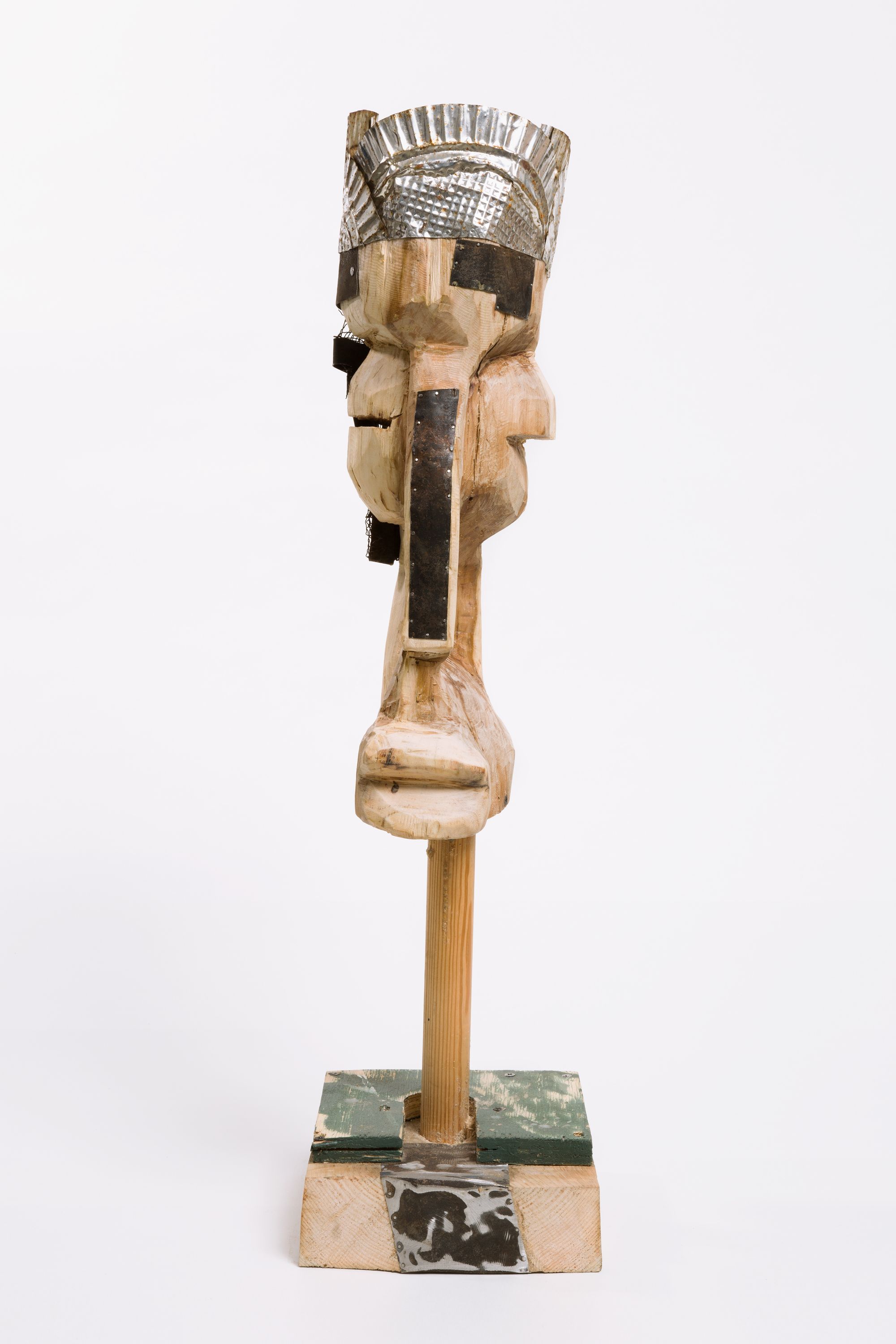
Omumbejja Sangalyabongo (The Only Daughter of Nagginda, The Wedded Queen of Buganda)
Wood, metal, nails, glue, and found objects
32.5 x 8.25 x 9 inches
2018

Omulangila Jjunju (Prince of the Buganda Kingdom)
Wood, metal, nails, glue, and found objects
29.5 x 10.75 x 8.75 inches
2018

Omulangila Semakokilo (Prince of the Buganda Kingdom)
Wood, metal, nails, and found objects
83 x 11.5 x 16.25 inches
2018
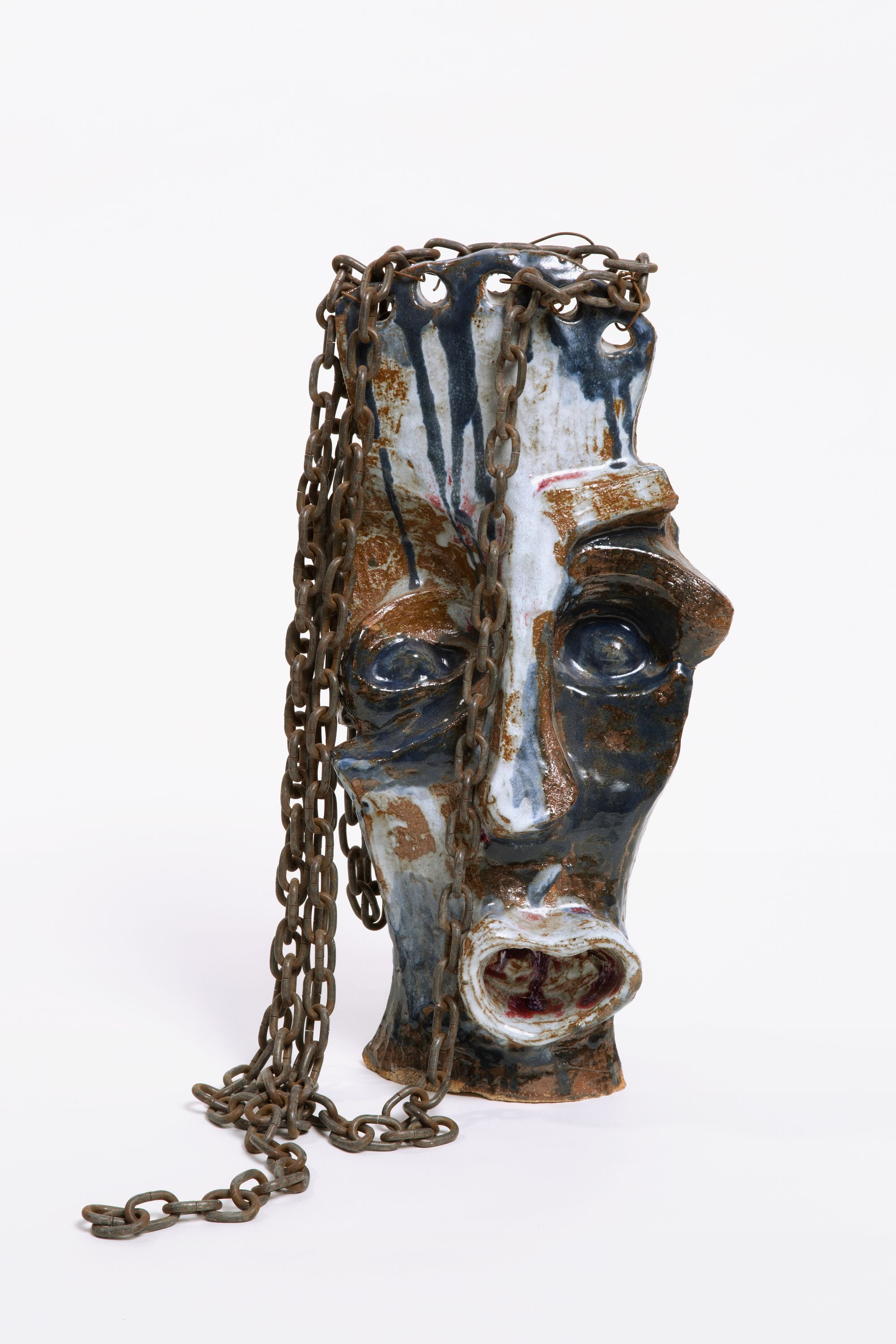
Namasole Nakatya (Queen Mother of Ssekababka Mwanga II)
Glazed ceramic, wire, and found object
18.5 x 9.5 x 6.5 inches
2018

Bugwe (Fence)
Found objects
41.5 x 28 x 2.5 inches
2018
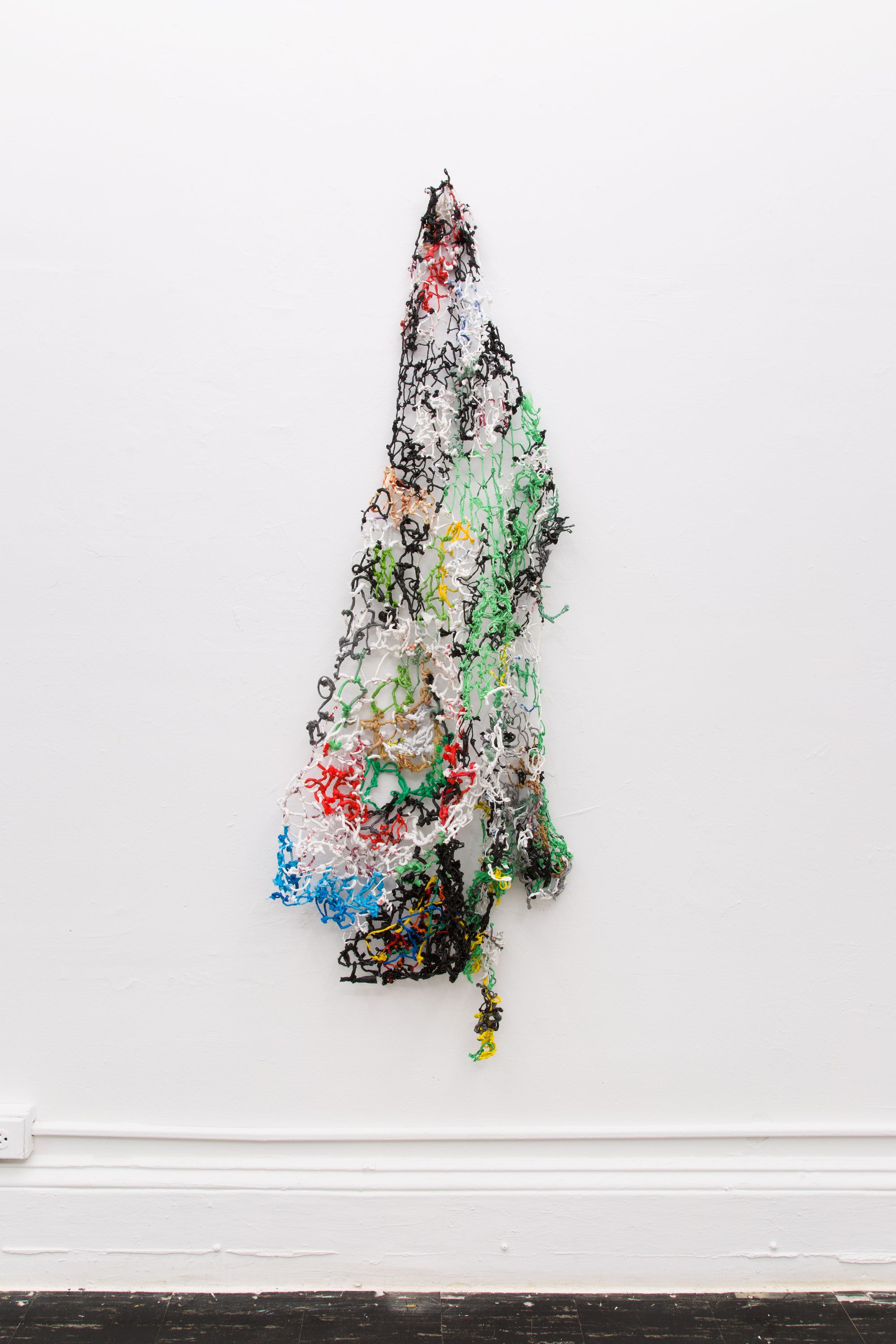
Knots
Plastic bags
Dimensions variable
58 x 19 x 9.5 inches (as pictured)
2015–17
Projects

